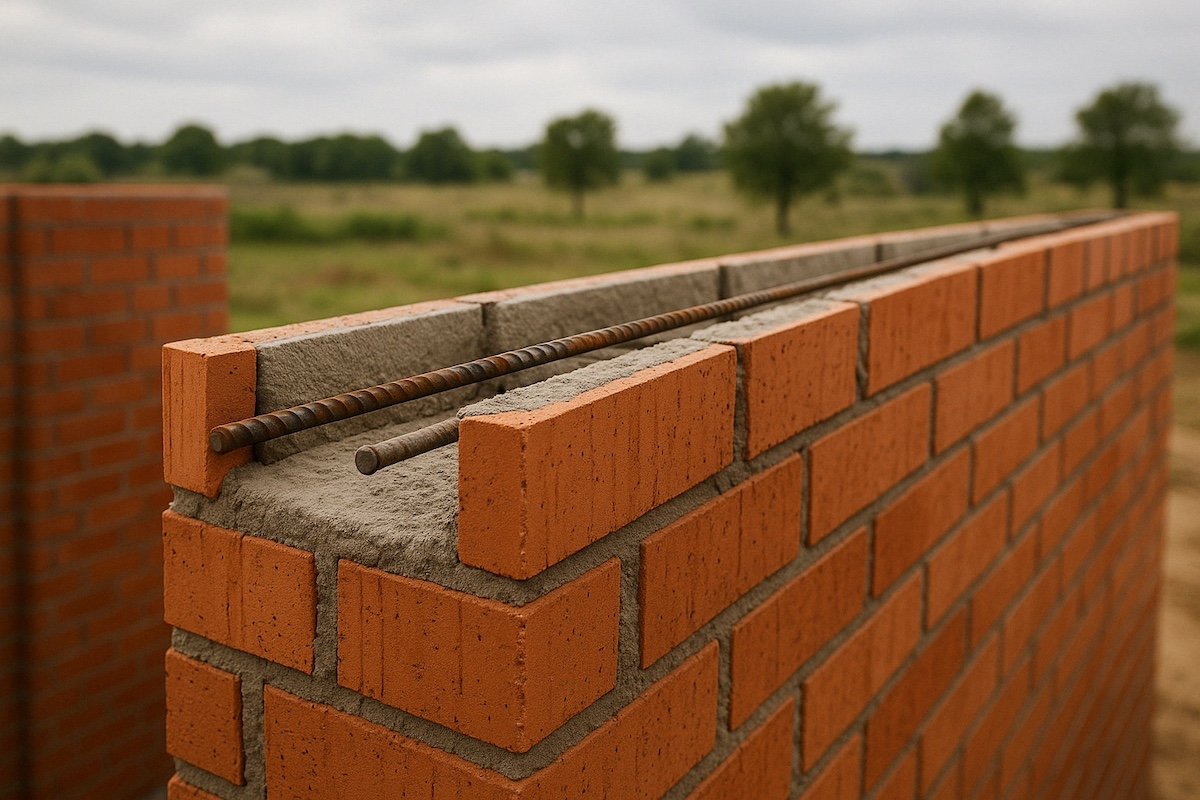Understanding What Is A Bond Beam: Guide And Benefits

A bond beam is a crucial component in construction, providing strength and stability to the structure. It is not just a simple element but plays a vital role in ensuring the safety of a building. Made from concrete or reinforced steel, a bond beam is designed to distribute the load evenly. This article aims to delve deeper into the significance and function of a bond beam in construction projects. By understanding what a bond beam is and its importance, you’ll gain valuable insights into the world of construction engineering.
What is a Bond Beam?
Welcome, curious minds! Today, we are going to explore the fascinating world of construction and learn all about a crucial element called a bond beam. Have you ever wondered what holds a building together or what makes it strong and sturdy? Well, bond beams play a significant role in ensuring the stability and durability of structures. Let’s dive deeper into this essential component.
Understanding the Basics
So, what exactly is a bond beam? In simple terms, a bond beam is a horizontal structural element that spans across the top of a masonry wall. It is typically made of concrete and reinforced with steel bars to provide added strength and support to the wall. Bond beams are crucial in distributing the load of the structure and preventing the walls from spreading apart under various forces.
Types of Bond Beams
There are different types of bond beams used in construction, each serving a specific purpose. The most common types include:
1. Reinforced Concrete Bond Beams
Reinforced concrete bond beams are the traditional choice for many construction projects. They consist of concrete reinforced with steel bars or mesh to enhance their structural integrity and load-bearing capacity. These bond beams are versatile and can be customized to fit different wall configurations.
2. U-Shaped Bond Beams
U-shaped bond beams, as the name suggests, have a U-shaped profile that wraps around the top and sides of the masonry wall. This design provides better lateral support and helps in preventing the wall from buckling or tilting under external pressures.
3. Lintel Bond Beams
Lintel bond beams are specifically used to support openings such as doors and windows in a masonry wall. These bond beams are reinforced with additional steel bars to withstand the concentrated loads that occur around openings.
Benefits of Using Bond Beams
Now that we know what bond beams are, let’s explore why they are essential for construction projects:
1. Structural Stability
Bond beams play a critical role in maintaining the structural integrity of a building. By distributing the load evenly and preventing the walls from shifting or bowing, bond beams ensure that the structure remains stable and secure.
2. Load Distribution
During seismic activities or strong winds, buildings are subjected to various forces that can cause structural damage. Bond beams help in distributing these loads effectively, reducing the risk of wall failure and ensuring the safety of occupants.
3. Crack Control
By incorporating bond beams in masonry walls, builders can minimize the occurrence of cracks and fissures. The reinforced concrete and steel reinforcement in bond beams provide additional strength and flexibility, reducing the likelihood of cracks forming over time.
Installation Process
Curious about how bond beams are installed? The process involves several steps to ensure proper placement and alignment:
1. Preparing the Wall
Prior to installing a bond beam, the masonry wall must be carefully inspected and prepared. Any debris or obstructions should be removed, and the surface should be cleaned to facilitate a secure bond between the beam and the wall.
2. Placing Reinforcement
Steel bars or mesh reinforcement are then placed within the formwork or molds that will contain the concrete for the bond beam. These reinforcements are essential for providing the necessary strength and support to the structure.
3. Pouring Concrete
Once the reinforcement is in place, concrete is poured into the formwork to create the bond beam. Care must be taken to ensure that the concrete is properly mixed and compacted to achieve the desired strength and durability.
4. Curing and Finishing
After the concrete has been poured, the bond beam must be allowed to cure and harden properly. This process involves keeping the concrete moist and protected from external elements until it reaches its full strength. Once cured, the bond beam can be finished and integrated into the overall structure.
And there you have it, young builders! We’ve uncovered the mystery of bond beams and learned about their importance in the world of construction. Next time you see a tall building or a sturdy wall, remember that behind its strength lies the humble bond beam, quietly holding everything together. Stay curious and keep exploring the wonders of the built environment!
The Construction Business : What Is a Bond Beam?
Frequently Asked Questions
What is a bond beam?
A bond beam is a horizontal structural element used in masonry construction to create a continuous load-bearing ring at the top of a wall. It is designed to distribute the load evenly and strengthen the structure.
How is a bond beam different from regular mortar joints?
A bond beam differs from regular mortar joints in that it is reinforced with steel bars or fibers to provide additional tensile strength. This reinforcement helps prevent cracking and enhances the overall stability of the structure.
Why are bond beams important in construction?
Bond beams play a crucial role in construction by improving the structural integrity of masonry walls. They help distribute the loads imposed on the wall evenly, reduce the risk of cracking, and enhance the overall durability and stability of the building.
Can bond beams be used in both residential and commercial construction?
Yes, bond beams are versatile structural elements that can be used in a wide range of construction projects, including residential homes, commercial buildings, and even industrial structures. Their ability to provide additional strength and stability makes them a valuable component in various types of construction.
Final Thoughts
In conclusion, a bond beam is a vital component of masonry construction. It is a horizontal structural element that reinforces a wall, providing additional strength and stability. Bond beams distribute loads evenly throughout the structure and help prevent cracking or shifting. Understanding the importance of a bond beam is crucial in ensuring the durability and integrity of a building.







